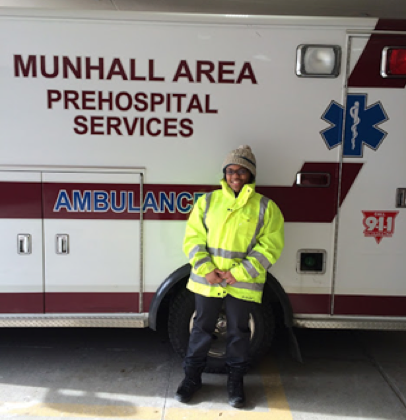 From EMS to Analytics: Addressing Critical Issues in Healthcare
From EMS to Analytics: Addressing Critical Issues in Healthcare
Written by Rachel Ollivierre (i3 2016)
Recently, I accepted a Marketing Research and Analytics position at Merck. During the interview I was asked to explain what sparked my interest in analytics and whenever I am asked this question, I always refer to my time as an EMT and as an i3 Scholar:
In the Fall of 2015, I arrived on the scene of my first call to find my patient, an obese 62-year-old woman, lying face down. She had fallen the night before on her way to the bathroom and due to her weight, she was unable to get up. It wasn’t until the next morning, when her 8-year-old grandson woke up, that she was able to call for help. After getting her into an upright position, I took her vitals and noticed that her lungs were congested. I proposed giving her oxygen, but my preceptor decided that we should take her to the hospital because she was at high risk for pneumonia after lying on a cold hardwood floor for hours.
Months later, I was standing at the bedside of a distressed patient who had fractured her leg and wanted to know how long before she could return to work. She became even more upset when the nurse told her the standard six to twelve-week range. The patient wanted to know why we could not accurately predict how long it would take her bone to heal, which I considered to be a valid question.
I began to wonder why there wasn’t there a tool that allowed clinicians to accurately predict healing times based on a patient’s age, weight, and other determinants. I thought about my first patient and how my preceptor’s 20 years of experience gave her the foresight to know that the patient was at high risk for pneumonia. An inexperienced EMT like myself would not have transported her to the hospital and an incorrect decision in this situation may have negatively impacted her health outcomes.

The past few months had revealed the gap between the needs of the healthcare industry and the tools at hand. It was at that moment that I decided to switch my major from Emergency Medicine to Health Services with a certificate in information science. While I knew very little about information science, I vehemently believed that technological solutions could be developed to solve critical issues facing the healthcare industry.
In Spring 2016, I took my first IS class, Introduction to Programming, and I hated it. At first, I was disheartened as it seemed as if my non-programming background inhibited me from pursuing my goal. It was during that semester that I was selected to participate in the iSchool Inclusion Institute (i3). At i3, we were taught programming, but we were not expected to leave i3 as full stack coders. The goal was for students to understand how information science was applicable in every industry.
Before i3, I had decided to abandon my goal to pursue an IS certificate because I saw information science as being synonymous with programming. Former Director, Mike Depew, disabused me of this misconception by exposing me to analytics, data mining, and so on. Mike encouraged me to apply for the Health Care Policy and Management program at Heinz College, a program which would fuse my passion for health care with my interest in technology.
When I began graduate school the next year, I was unsure of the specifics of my future, so I reached out to other i3 Alum for recommendations who encouraged me to explore a variety of classes, such as database management and business intelligence. It was during this trial period that I discovered my passion for analytics, which led me to apply for the senior specialist role at Merck.

As I reflect back on the past three years, I think about how i3 helped smooth my transition from EMS to analytics. I feel fortunate to have met such supportive and encouraging young professionals through i3. I hope to be able to pay it forward by inspiring the next generation of i3ers to apply information science to their passion.